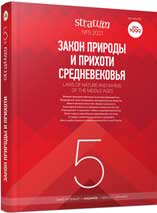Отказ от зооморфных элементов как одна из важных характеристик развития стиля борре в прикладном искусстве Древней Руси (на примере деревянных находок Великого Новгорода)
The Rejection of Zoomorphic Elements as One of the Important Characteristics of the Borre Style Development in the Applied Art of Old Russia (by wooden finds from Novgorod the Great)
Author(s): Nadezhda N. TochilovaSubject(s): History, Cultural history, Middle Ages, 6th to 12th Centuries, History of Art
Published by: Издательский дом Stratum, Университет «Высшая антропологическая школа»
Keywords: pre-Mongolian Rus; Viking Age; art; Borre style; zoomorphic elements; Novgorod the Great;
Summary/Abstract: The article deals with the development of Borre style outside of Scandinavian countries. The Borre ring-chain and gripping beasts were the most widespread elements of Scandinavian territories, whilst ribbon plates and scale ornament were popular outside of it. This process is more characteristic for the Baltic area and on the British Isles. Another region of this art dissemination was the territory of northwest Rus’. The article focuses on the analysis of carved wooden objects from the archaeological collection from Novgorod the Great. This makes it possible to present the development of Borre style in the art of the Ancient Rus’. The result is an analysis and attribution of decoration, which allows to attribute some motives to the category of images created under the influence of the Viking Age art and to trace the development and preservation of artistic traditions from the 10th to 13th centuries.
Journal: Stratum plus. Археология и культурная антропология
- Issue Year: 2021
- Issue No: 5
- Page Range: 157-165
- Page Count: 9
- Language: Russian
- Content File-PDF

